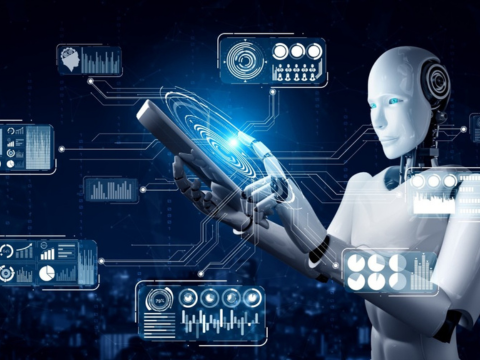Artificial Intelligence (AI) is rapidly transforming various sectors, and education is no exception. The integration of AI in education is revolutionizing traditional teaching and learning methods, offering new possibilities for personalized learning, enhancing teacher-student interactions, and making education more accessible and efficient.
While AI has significant potential to transform education, its integration also presents a range of challenges.
These challenges need to be addressed to ensure that AI’s benefits are realized without compromising the quality and integrity of education.
1. Data Privacy and Security
AI systems in education often require access to vast amounts of personal data, including students’ academic records, learning habits, and even biometric information. This raises significant concerns about data privacy and security. If this data is not properly protected, it could be vulnerable to breaches, leading to unauthorized access or misuse of sensitive information. Ensuring robust data protection measures and adhering to privacy regulations are crucial to maintaining the trust of students, parents, and educators.
2. Bias and Fairness
AI algorithms are trained on data, and if this data is biased, the AI system may perpetuate or even exacerbate these biases. In education, this can lead to unfair outcomes, such as biased grading, unequal access to learning resources, or the reinforcement of stereotypes. For example, an AI system might favor students from certain demographic backgrounds over others, leading to disparities in educational opportunities. Addressing bias in AI requires careful selection of training data and ongoing monitoring to ensure fairness.
3. Lack of Human Interaction
Education is not just about knowledge transfer; it is also about fostering social and emotional development. Over-reliance on AI in education could reduce face-to-face interactions between students and teachers, which are crucial for developing communication skills, empathy, and critical thinking. While AI can assist in many aspects of education, it cannot fully replace the human elements of teaching, such as mentorship, encouragement, and personalized feedback. Striking a balance between AI and human interaction is essential to maintaining a well-rounded educational experience.
4. Cost and Accessibility
Implementing AI in education can be expensive, requiring significant investments in technology, infrastructure, and training. This can create a digital divide, where only well-funded schools or institutions can afford to integrate AI, leaving underfunded schools and students from low-income backgrounds at a disadvantage. Ensuring that AI in education is accessible to all students, regardless of their socio-economic status, is a critical challenge. There is a need for policies and initiatives that promote equitable access to AI-powered educational tools.
5. Teacher Resistance and Training
Many educators may resist the adoption of AI due to concerns about job displacement, a lack of understanding of the technology, or skepticism about its effectiveness. Additionally, teachers need proper training to effectively integrate AI tools into their teaching methods. Without adequate professional development, the potential of AI to enhance education may not be fully realized. Overcoming resistance and providing comprehensive training are necessary steps in ensuring that AI is successfully integrated into the educational system.
6. Ethical Considerations
The use of AI in education raises several ethical questions, such as the extent to which AI should be involved in decision-making processes that affect students’ lives. For instance, should AI systems be allowed to determine a student’s academic path or make decisions about their future based on predictive analytics? There is also the concern of transparency—students and educators need to understand how AI systems arrive at their conclusions and recommendations. Ensuring ethical use of AI requires clear guidelines, transparency, and accountability in AI applications.
7. Dependence on Technology
As AI becomes more integrated into education, there is a risk that both students and educators could become overly dependent on technology. This dependence might reduce critical thinking and problem-solving skills, as students may rely too much on AI to provide answers and solutions. Additionally, technological failures or limitations could disrupt the learning process. It is important to ensure that AI complements rather than replaces traditional educational methods, allowing students to develop a broad range of skills.
8. Content Quality and Relevance
AI systems are only as good as the content they deliver. Ensuring that the educational content provided by AI tools is accurate, up-to-date, and relevant to the curriculum is a significant challenge. There is also the risk of homogenization, where AI might promote standardized content at the expense of diverse perspectives and critical thinking. Educators must carefully curate and monitor the content used by AI systems to maintain educational quality.
CONCLUSION
While AI offers immense opportunities for enhancing education, these challenges highlight the need for careful and thoughtful implementation. Addressing issues related to privacy, bias, cost, and ethical considerations is essential to ensure that AI in education benefits all students and contributes to a more equitable and effective educational system.
Collaboration between educators, policymakers, technologists, and communities is crucial to navigating these challenges and harnessing the full potential of AI in education.

